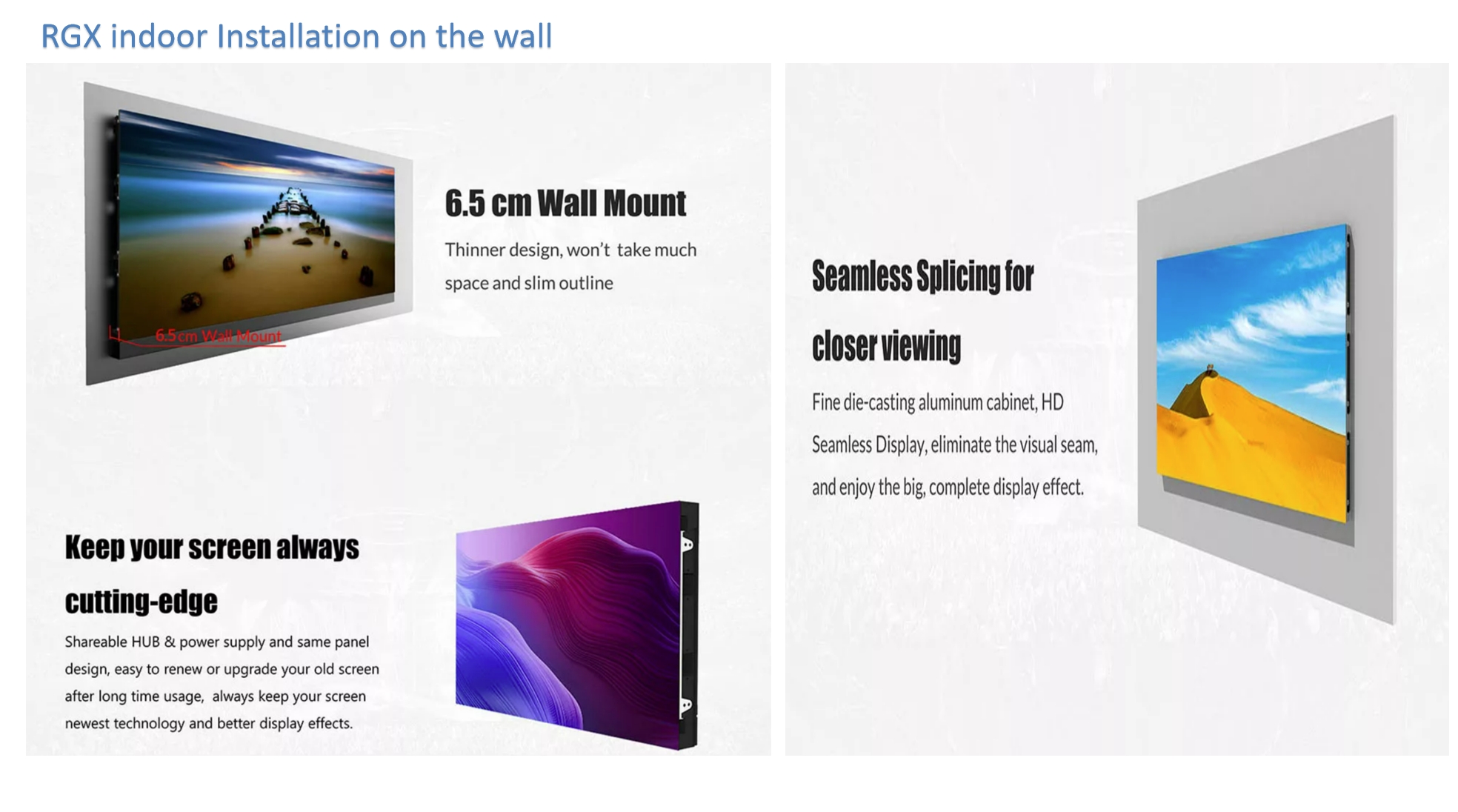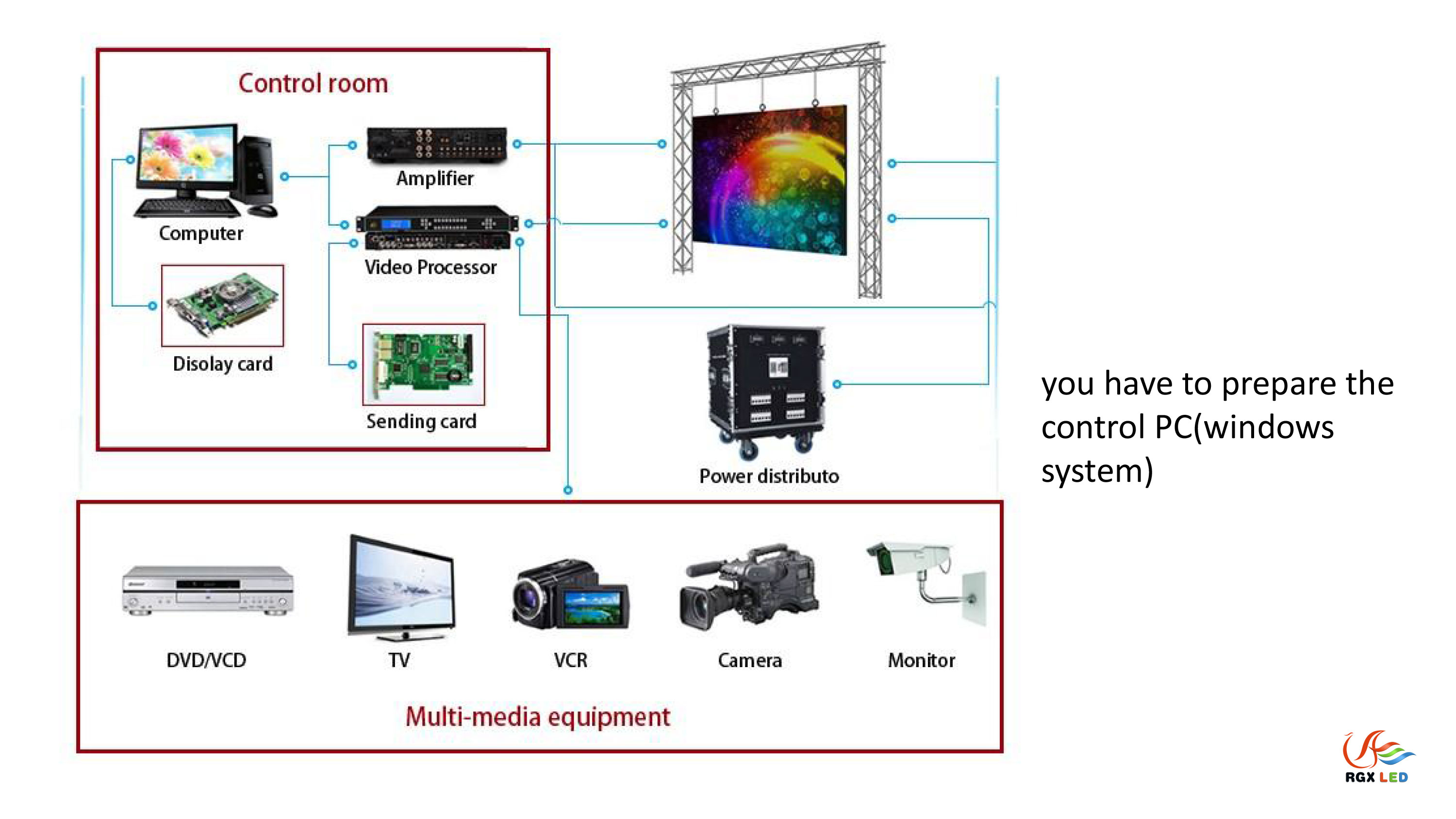
- English
- Español
- Português
- русский
- Français
- 日本語
- Deutsch
- tiếng Việt
- Italiano
- Nederlands
- ภาษาไทย
- Polski
- 한국어
- Svenska
- magyar
- Malay
- বাংলা ভাষার
- Dansk
- Suomi
- हिन्दी
- Pilipino
- Türkçe
- Gaeilge
- العربية
- Indonesia
- Norsk
- تمل
- český
- ελληνικά
- український
- Javanese
- فارسی
- தமிழ்
- తెలుగు
- नेपाली
- Burmese
- български
- ລາວ
- Latine
- Қазақша
- Euskal
- Azərbaycan
- Slovenský jazyk
- Македонски
- Lietuvos
- Eesti Keel
- Română
- Slovenski
- मराठी
- Srpski језик
RGX led display screen Trainning course
2024-01-15
What is LED Screen?
LED (Light Emitting Diode) Screen: An LED screen is a display technology that uses light-emitting diodes to produce images, videos, or any form of content. LEDs are small semiconductors that emit light when an electric current is applied. LED screens are commonly used for various purposes, including television displays, digital signage, information displays, and large-scale outdoor displays.

What Kind of LED Screen?( Indoor and Outdoor led screen)
Indoor LED Screens:
Designed for indoor environments with controlled lighting.Smaller pixel pitch for closer viewing distances.Used for applications like conference rooms, retail displays, and indoor advertising.


Outdoor LED Screens:
Built to withstand outdoor conditions, including varying weather. Larger pixel pitch suitable for longer viewing distances.Used for outdoor advertising, stadium displays, and public information displays.


Indoor or Outdoor led display: Outdoor screens need additional protection against weather, impacting costs.
Resolution Requirements: Higher resolution demands more pixels, contributing to increased costs.
Brightness Levels: Screens with higher brightness for outdoor use tend to be more expensive.
Refresh Rate: Higher refresh rates for smoother motion can influence pricing.
Installation Complexity: Factors like mounting, cabling, and integration affect installation
What’s is rental design led display
A rental LED screen refers to a modular display system composed of individual LED modules that can be temporarily installed and rented for various events or purposes. These screens are designed for flexibility, ease of installation, and quick dismantling, making them ideal for short-term use in events such as concerts, trade shows, conferences, weddings, sports events, and more.
Modularity: Rental LED screens consist of modular panels or tiles, each containing an array of LED pixels. These modules can be easily connected to create a larger screen.
Portability: These screens are designed for easy transportation and quick setup. They often come with protective flight cases for secure transportation.
Quick Assembly: Rental LED screens are engineered for rapid installation and dismantling. This feature is crucial for events with tight schedules.
Various Pixel Pitches: Rental screens come in different pixel pitches to accommodate various viewing distances. A smaller pixel pitch is suitable for closer viewing, while a larger pitch is ideal for larger audiences and longer distances.
High Brightness and Contrast: To ensure visibility in different lighting conditions, rental LED screens typically have high brightness levels and contrast ratios.
Wide Viewing Angles: A good rental LED screen offers wide viewing angles to ensure that the audience gets a clear view from different positions.
Scalability: Rental screens can be easily scaled up or down based on the size requirements of the event venue.
Advanced Control Systems: These screens are usually equipped with advanced control systems that allow for real-time content management and adjustment of display settings.
Rental design led display
slim & light / fast assemble& disassemble /movable use



How to choose good led display
Choosing an LED screen involves considering various factors, and the selection of the LED chip is a crucial aspect. Here are the key steps to guide you in choosing the right LED screen and LED chip:
Define Your Application: Understand the specific application of the LED screen. Is it for indoor or outdoor use? Will it be used for advertising, events, digital signage, or another purpose?
Consider Viewing Distance: The viewing distance influences the pixel pitch requirement. For closer viewing, a smaller pixel pitch is necessary for better image quality.
Pixel Pitch: Pixel pitch is the distance between the centers of two adjacent pixels. A smaller pixel pitch indicates higher pixel density and better image quality, especially for close-up viewing.
Brightness Requirements: Determine the required brightness based on the ambient lighting conditions. Outdoor displays and areas with high ambient light levels generally require higher brightness.
Color Quality: Consider the color quality needed for your application. If color accuracy is crucial, choose an LED chip with a high Color Rendering Index (CRI).
LED Chip Manufacturer: Select LEDs from reputable manufacturers known for producing high-quality, reliable chips. Research and read reviews to ensure the chosen manufacturer has a good track record.
Consider Environmental Factors: If the LED screen will be exposed to harsh environmental conditions, such as moisture, dust, or extreme temperatures, choose LEDs designed to withstand these conditions.
Budget Considerations: Determine your budget for the LED screen project. High-quality LED chips may have a higher upfront cost but can provide better performance and durability
The price of led display depends on what factors
The price of an LED display can depend on various factors, and the specific details may vary based on the manufacturer, model, and the features of the LED display. Here are some common factors that can influence the price:
Resolution: Higher resolution displays, which have more pixels and provide better image quality, often come at a higher cost.
Pixel Pitch: Smaller pixel pitch, indicating higher pixel density, can contribute to a clearer and sharper image. Displays with smaller pixel pitch are generally more expensive.
Brightness: Displays with higher brightness levels, especially those designed for outdoor use or areas with high ambient light, can be more expensive.
Color Quality: Displays with better color accuracy and a higher Color Rendering Index (CRI) may come at a premium.
Refresh Rate: Displays with higher refresh rates can provide smoother video playback but may be more expensive
Cabinet Material: The material used for the display cabinets can influence the cost. High-quality materials that are durable and weather-resistant may increase the price.
Brand Reputation: Established and reputable brands often command higher prices due to their track record for quality and reliability.
Customization: Custom features, such as curved screens, unique shapes, or special designs, can increase the cost.
Warranty and Support: Displays with longer warranties and comprehensive technical support may have a higher initial cost






